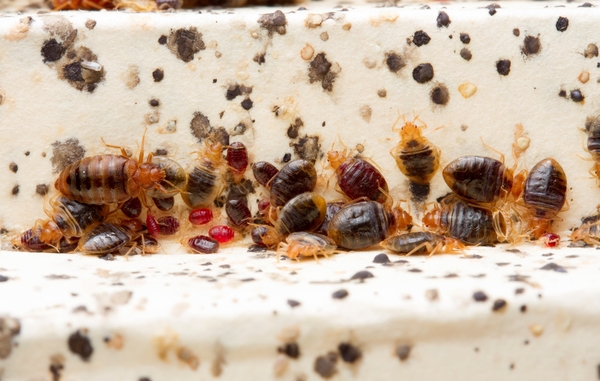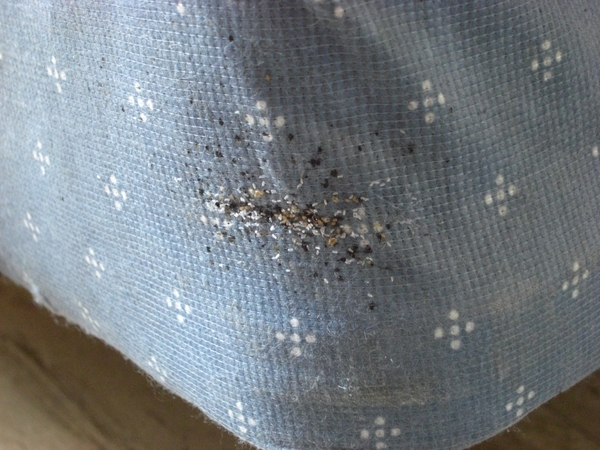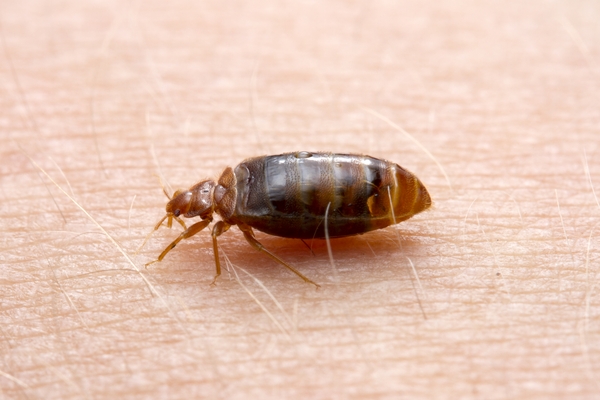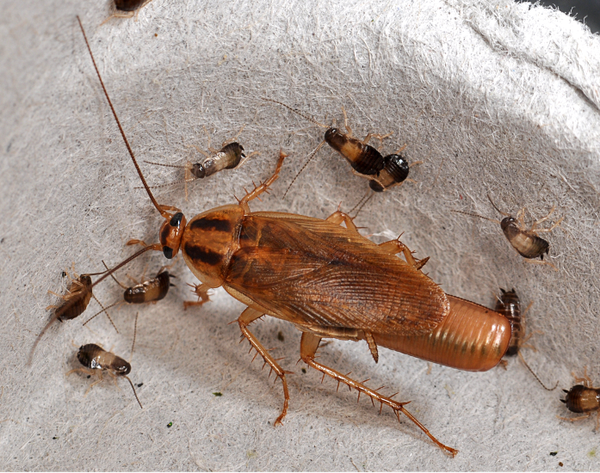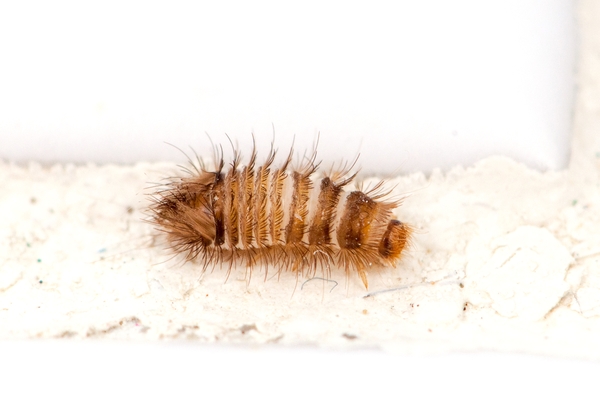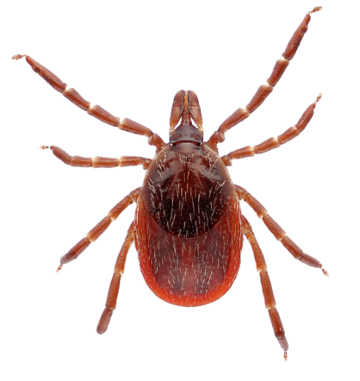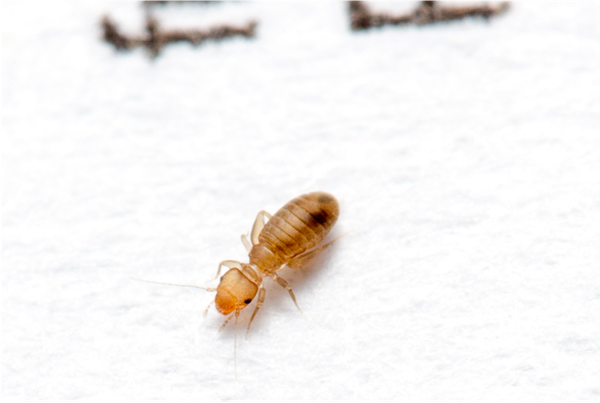Introduction
In many cases, bed bug problems start with just one intruder. Typically, a bed bug infestation begins with a lone straggler transported in from somewhere else. These insects can easily make their way inside our homes via a number of routes. For instance, on luggage we take to hotels or rental properties, in second-hand furniture or other goods, from visits to homes of friends or relatives with unknown infestations, or when day to day jobs involve visits to potentially infested areas. In this article, we review some tips to help you avoid taking an unwanted guest (or guests) home with you. In addition, we will cover steps to take when an introduction of bed bugs is suspected.
Know the Warning Signs
The first step in preventing and combating a pest infestation is to know as much as you can about the enemy in question. In the case of bed bugs, this includes being able to identify: i) potential bites/signs of feeding, ii) places they like to hide (refugia), iii) signs of activity, and iv) things that aren’t a bed bug. Let’s go over some information that will help you on each of these fronts!
Bed bugs are obligately hematophagous, meaning, they have to consume blood to survive. Their preference? Human blood. Like mosquitoes, they use a long, needle-like proboscis (sucking mouthpart) to pierce human skin. After a bed bug feeds, you may be left with a welt similar in appearance to a mosquito bite. In severe cases, hives, wheals, or blisters can result. However, many people do not react to bed bug bites at all. For that reason, bites, bite-like lesions, or rashes alone are not a reliable sign of a bed bug problem. However, if you have lesions, have been exposed to bed bugs recently, or have traveled and suspect exposure, some bite patterns to look for include:
-
Clusters or lines of bites: Bed bugs primarily feed at night, when potential hosts are asleep and unaware. Multiple bugs may feed a region where skin meets a flat surface (e.g., an arm resting flat against a mattress). When multiple bed bugs feed at this junction, it can result in lines or clusters of bites. Those who are very sensitive may also have reactions from simple probing (when a bed bug touches the proboscis to the skin, but does not insert). Probing can result in multiple bite reactions in a cluster or line, too. However, you can ignore the “breakfast, lunch, and dinner” premise that you may have read elsewhere. There is no conclusive evidence to support the clustering of three bites or probes (or a combination of the two) at a time.
-
Bites in areas that are exposed: Bed bugs prefer areas of the skin that are exposed. For that reason, you may see more bites on the arms, legs, face, and neck than covered regions. Unlike tick bites, which usually present around the banding of clothing (socks, pants, underwear)--bed bugs will often attack areas unencumbered by clothing or sheets.
While bites from bed bugs will almost certainly occur as a result of infestation and the need of bed bugs to feed, their tangible presence is unreliable at best and at worst (from an identification perspective), completely non-existent. Therefore, we want to reiterate that the presence or absence of bites, of any kind, should not be used to identify or exclude the possibility of a bed bug infestation. Instead, look for other signs of infestation, including fecal spots (Figure 1), exuviae (shed skins that result from bed bug growth) (Figure 2), and obviously, the presence of live bugs.
Bed bugs start as eggs, hatch into what we call “nymphs”, go through five nymphal stages, and then become adults. Adult bed bugs are reddish brown, oval, flattened insects before feeding (Figure 3). After a blood meal, they are swollen/engorged and dull red (Figure 4). Immature bed bugs range greatly in size from the first to the final (fifth) instar. First instars are tan to clear and small (they are hard to see), while fifth instars can be almost as large and dark in color as an adult. Nymphs range in color from almost clear (first instar) to a dark, creamy, tan color as fifth instars. All juvenile bed bugs become swollen and bright to dull red after a blood-meal (Figure 1).
Due to their small size, light color (upon hatching), aversion to light, and preference for hiding in small tight spaces, bed bugs can be difficult to spot–especially when they are young. They become especially difficult to see on items like furniture, luggage, backpacks, and other items with zippers, seams, and folds in fabric (Figure 2). They can easily hide in crevices as thin as one sheet of paper. Eggs are only 1/25th of an inch and can be even more difficult to spot when only a few are present. Visual inspection for bed bug activity must be thorough in light of these hurdles. Additionally, it may be easier to look for signs of activity versus live bugs as you begin. For instance, looking for fecal spots (Figure 1), or shed skins (Figure 2) which are often left out in the open and can be easier to find. Once you find signs of activity, live bed bugs are probably close by. For more information about identifying bed bugs, see Bedbugs - Biology and Management.
Finally, you do not want to misdiagnose the problem. Many insects can be confused with bed bugs. German cockroach nymphs (Figure 5), carpet beetles (Figure 6, Figure 7), ticks (Figure 8), and booklice (Figure 9) are mistaken for bed bugs all the time. If you have doubts about what you are dealing with, reach out to a diagnostician. If you are in North Carolina, feel free to send a sample to our Plant Disease and Insect Clinic.
What Can You Do to Avoid an At-Home Infestation?
-
Before you travel, research your destination and avoid hotels or rental properties that have reported, or been associated with, bed bug infestations in the past.
-
Carry some plastic trash bags in your luggage. These can be used to enclose and isolate your clothing and other items during and after your stay.
-
When staying in a hotel, rental property, or any other residence you are unfamiliar with, inspect the room for signs of bed bug infestation prior to unpacking. Do this by pulling back the covers and sheets of the bed to look for fecal spotting (Figure 7) or signs of infestation. Inspect the seams of the mattress and box spring, the headboard, bed frame, and any other concealed or tight areas. Start closest to the bed and move outward, as bed bugs tend to preferentially aggregate in areas closest to potential hosts.
-
Many places now use mattress encasements to protect against bed bug infestations. This is a smart, proactive strategy to prevent infestation. It does not mean that there is an active infestation. If your hotel or rental mattress is encased do not open it. They are difficult to reseal. If resealed improperly, the effectiveness is lost. If the encasement becomes torn during your stay, alert management immediately.
-
Do not place luggage on beds or on the floor near beds in residences you are unfamiliar with. Some hotels have fold out luggage stands that can be used to pack and unpack your suitcase(s).These stands are not “bed bug proof”, and you should check them for signs of bed bug activity–particularly where the webbing wraps around the frame. Additionally, you can store luggage in a trash bag (preferably a white or light-colored trash bag so you can see any live insects), or, keep your luggage in the bathtub for even greater protection. These surfaces are not impervious to bed bugs, but it is harder for bed bugs to climb slick, smooth surfaces as opposed to fabrics or textured surfaces.
-
If evidence of bed bug infestation is found, do not spray pesticides in your hotel/vacation room. Remember, you are not the only guest who has used (or will use) the room and many people are sensitive to pesticides. Instead, contact the hotel/vacation rental management and report the problem. They likely have a pest control program in place and any spraying you do may be hazardous or actually disruptive to their pest control efforts. Also: spraying does not make you any less likely to take a bed bug home.
-
For work-related home or location-based visits, minimize what you bring into the home. Place items on a hard surface, such as a table, rather than on a couch, chair or the floor next to furniture. Items you take inside should be easy to inspect, versus something like a purse or backpack, which could easily conceal wandering bed bugs.
-
If your job takes you into potentially-infested homes, be careful about spraying repellents on your clothing. Although you may not be sensitive to pesticides, the residents of homes that you visit may have a reaction to repellent chemicals. There is limited evidence on the effectiveness of repellents for bed bugs as well, although DEET shows some promise.
-
Take a change of clothes with you on site visits. At the end of the day, change out of your work clothes, place them in a sealed bag, and empty them into a dryer upon returning home. Dry work clothing on high heat for two cycles.
-
For used furniture and other household items: Visually inspect before accepting the item(s). If you are unsure how to perform an inspection on the item, enlist the help of a professional. You can gently breathe into cracks/crevices to coax bed bugs into the open (if they are present). Pay close attention to concealed areas where body parts remain unmoving for long periods of time, especially the concealed side of kick-plates and foot rests on couches and recliners. DO NOT bring a used item into the home without ensuring it is free of bed bugs. Used and rental electronics, furniture, and clothing are all prone to harboring bed bugs. Portable heat treatment chambers can be handy for smaller infested items (but are costly). If furniture is infested, it is inadvisable to accept or purchase it, even if it could be treated. Couches, recliners, etc., are much more difficult to certify as “bed bug free” than small items. The potential cost of treating a bed bug infestation is not worth the reduced item cost in those cases.
What Should You Do If You Find Bed Bugs During Travel?
-
Immediately notify the owner/manager of the property so they can address the problem as quickly as possible. Do not attempt to control or address the problem yourself, especially when it comes to the application of a pesticide. This could result in health problems, worsening the bed bug problem, and potential litigation.
-
If you have already unpacked, place your clothing and other items back into your luggage or into trash bags. If possible, place your luggage into trash bags too (double-bagged) and seal the bags with tape or tie them in knots. If sealing the bags is skipped, it is possible to transfer crawling bugs to your car, or possibly into the luggage of other travelers if flying. Do not spray your clothing or luggage with pesticides.
-
Carefully inspect the clothing you are wearing to make sure that bed bugs did not crawl onto you while you were handling items that you suspect may be infested. Do not apply insecticides to the clothing you are wearing or to your skin or hair. Unlike head lice, bed bugs do not remain on their hosts, so it is unlikely that you will find them in your hair or on your skin for very long. If after inspection you are still concerned about bed bugs on your body, take a shower using standard body soap and shampoo. Afterwards, simply comb/brush your hair thoroughly.
-
Upon arriving home, avoid opening and unpacking your bags and luggage except where you can contain the contents. For example, open them outdoors, in a garage, or in a bathtub where you can more easily spot any bed bugs.
-
Place washable clothing into a trash bag and then transfer them directly into the dryer. If you have to take your laundry to a laundromat, reseal the bags before carrying them or placing them back into a vehicle.
-
Place items into the dryer for at least two cycles on high heat. Garments that cannot be washed/dried may need to be dry cleaned. After items have been dried, you can launder them as normal (wash, iron, etc.).
-
Keep clothing in sealed trash bags until you’re ready to move them into a dryer. Do not leave piles of unwashed clothing on the floor or on a nearby countertop near clean laundry. It is possible for bed bugs to crawl out and infest these clean items.
-
-
In some cases you may prefer to discard clothing or other items that are potentially infested. If you do, make sure they are placed into trash bags before you carry them out of your home or else you may spread them indoors. Discard these items directly into a closed trash can, dumpster, or at the landfill. Never donate or leave potentially infested items next to a trash can or dumpster where someone else might pick them up.
-
Backpacks, duffel bags, and similar items can often be placed into a clothes dryer on high heat without damaging them. In the case of larger luggage and other items that can’t be dried in a standard clothes dryer, you can use a portable steamer unit or you can treat them lightly with an insecticide. Use a spray containing pyrethrins or any other pesticidal product that is labeled for both bed bugs and for treating fabric. Many populations of bed bugs now exhibit high levels of insecticide resistance, so be sure to confirm that all insects are dead prior to considering treatment completed. If pesticidal products fail, heat treatment is an effective (but at times costly) alternative. Clean all treated surfaces of luggage with soapy water before you reuse it.
-
Placing items in sealed bags in your car (or on your driveway) on a hot day may kill bed bugs, but that really depends on whether the temperature within the bag reaches 122°F (thermal death point). Bear in mind that clothing and other items bunched inside trash bags inside your car may actually insulate bedbugs and their eggs by creating cool refugia that do not reach the thermal death point. To avoid this, loosely pack items, lay them flat, and do not overfill bags. If you try this method, you may want to keep these items separated from uninfested goods until you are certain the items are uninfested. Be sure to check for live insects upon opening, as eggs may have hatched (if they were present) and newly hatched first instars are difficult to see.
-
It is not necessary to treat your house for bed bugs if you follow these procedures. Importantly, do not try to use a fogger to treat potentially infested items. Although some foggers may be labeled for use against bed bugs, research shows that they are largely ineffective.
Conclusions
If you have traveled recently or purchased used items, followed all of the recommendations above, but are still worried that you have a bed bug problem–reach out to a professional pest management company. They should be able to perform an inspection and provide treatment, if necessary. However, if all of the above steps are followed with vigilance, it is very possible to i) avoid picking up and spreading bed bugs during travel or day to day activities, and ii) avoid an at-home infestation. For any additional questions, please reach out to our urban and structural entomology extension specialists.
Acknowledgements
We thank Michael Waldvogel and Patty Alder for generating the previous version of this insect note.
Publication date: Aug. 1, 2009
Reviewed/Revised: Feb. 7, 2023
Recommendations for the use of agricultural chemicals are included in this publication as a convenience to the reader. The use of brand names and any mention or listing of commercial products or services in this publication does not imply endorsement by NC State University or N.C. A&T State University nor discrimination against similar products or services not mentioned. Individuals who use agricultural chemicals are responsible for ensuring that the intended use complies with current regulations and conforms to the product label. Be sure to obtain current information about usage regulations and examine a current product label before applying any chemical. For assistance, contact your local N.C. Cooperative Extension county center.
N.C. Cooperative Extension prohibits discrimination and harassment regardless of age, color, disability, family and marital status, gender identity, national origin, political beliefs, race, religion, sex (including pregnancy), sexual orientation and veteran status.

